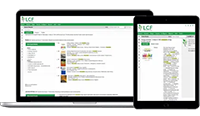Lucidea’s Lens: Knowledge Management Thought Leaders Part 92 – Jay Liebowitz

Stan Garfield
 Jay Liebowitz is a professor, consultant, author, and editor. His research interests include knowledge management, data analytics, intelligent systems, intuition-based decision making, IT management, expert systems, and artificial intelligence. He has lectured and consulted worldwide.
Jay Liebowitz is a professor, consultant, author, and editor. His research interests include knowledge management, data analytics, intelligent systems, intuition-based decision making, IT management, expert systems, and artificial intelligence. He has lectured and consulted worldwide.
Jay is Professor of Business Innovation and Industry Transformation at the Crummer Graduate School of Business at Rollins College. He was the first Knowledge Management Officer at NASA Goddard Space Flight Center and was the Founding Editor-in-Chief of Expert Systems with Applications: An International Journal.
He has published over 45 books and many journal articles. Jay is the Series Book Editor of the Data Analytics Applications book series published by Taylor & Francis.
Here are definitions for five of Jay’s specialties:
- Analytics: Discovery and communication of meaningful patterns in data and text
- Artificial intelligence (AI): The capacity of a computer to perform operations analogous to learning and decision making in humans, as by an expert system
- Decision Making: The process of making choices by identifying a decision that needs to be made, gathering information, and assessing alternative resolutions.
- Expert Systems: Computerized systems that emulate the decision-making ability of a human expert; designed to solve complex problems by reasoning about knowledge, represented mainly as if–then rules rather than through conventional procedural code
- Intelligent Systems: Technologically advanced machines that perceive and respond to the world around them. They operate in an environment with other agents; possess cognitive abilities such as perception, action control, deliberative reasoning or language use; follow behavioral principles based on rationality and social norms; and have the capacity to adapt through learning.
Jay created the following content. I have curated it to represent his contributions to the field.
Books by Jay Liebowitz

Key Ingredients to the Success of an Organization’s Knowledge Management Strategy
Eight-Stage Process for Knowledge Management
- Stage 1: Identify—Determine core competencies, sourcing strategy, and knowledge domains.
- Stage 2: Capture—Formalize existing knowledge.
- Stage 3: Select—Assess knowledge relevance, value, and accuracy. Resolve conflicting knowledge.
- Stage 4: Store—Represent corporate memory in knowledge repositories with various knowledge schema.
- Stage 5: Share—Distribute knowledge automatically to users based on interest and work. Collaborate on knowledge work through virtual teams.
- Stage 6: Apply—Retrieve and use knowledge in making decisions, solving problems, automating or supporting work, job aids, and training.
- Stage 7: Create—Discover new knowledge through research, experimenting, and creative thinking.
- Stage 8: Sell—Develop and market new knowledge-based products and services
In order to implement such a knowledge management process, several important elements are needed:
- A Knowledge Management Strategy with support from senior leadership
- A Chief Knowledge Officer (CKO) or equivalent and a knowledge management infrastructure within the organization
- Knowledge ontologies and knowledge repositories to serve as organizational/corporate memories in core competencies
- Knowledge management systems and knowledge management tools
- Incentives to motivate employees to share knowledge
- A supportive culture for knowledge management
Knowledge Retention: What Practitioners Need to Know
Four key pillars underlying a knowledge retention (KR) strategy:
- Bi-directional knowledge flow—having a top-down management push and bottom-up grass roots approach to gaining financial and moral support for KR activities;
- Convenient KR mechanisms—using both codification (systems-oriented collection approaches) and personalization (people-to-people connection approaches);
- Recognition and reward structure—incorporating ways to recognize and/or reward individuals for exhibiting knowledge sharing behaviors; and
- The golden gem—bringing back retirees creatively in KR roles.
KR process:
- Assess the risk of losing critical knowledge and skills.
- Determine an approach to capture critical knowledge.
- Implement and evaluate actions for managing that risk (documentation, mentoring, training, re-engineering, sharing expertise).
- Knowledge retention approaches run the gamut from easy-to-use, low-cost approaches to more sophisticated, pricey techniques.
A variety of KR approaches include the following:
- A knowledge map, to be placed on the organization’s intranet for preservation and expansion purposes, can be a useful aid.
- Continuity books, as used in the military, or job hand-off aids, as used in companies like John Deere, can describe typical job duties, business processes, workflows, points of contacts, etc., to help someone quickly climb the learning curve.
- Deskside reviews can be used where someone learns by exchanging templates, cheat sheets and other job aids that may be in the desk drawers or on a hard drive, instead of on the organization’s shared drives.
- Mentoring programs, job shadowing, lunch and learn sessions, organizational narratives/storytelling, knowledge fairs, job rotation, wikis, blogs, expertise locator systems (yellow pages of expertise), videotaped interviews, online searchable multimedia asset management systems, lessons learned systems, do’s and don’ts tutorials (webcasted) and other KR approaches can be applied as appropriate.
Essentially, knowledge retention and transfer should lead to organizational learning, which should be part of the fabric of the organization. Important aspects of the organizational learning formula are:
- Develop “reflective practitioners.”
- Create incentives for encouraging learning.
- Stress learning at all levels—individual learning, team/group learning and inter-project learning; develop a lessons learned process and generic templates for target audiences).
Knowledge Sharing Tenets for Success
- Enhance reward and recognition system to include learning and knowledge sharing competencies.
- Acquaint people with knowledge sharing and its benefits.
- Share the message that with creativity comes failure and we all benefit from talking about our successes and our failures.
- Integrate knowledge sharing into everyone’s job.
- Educate people about what types of knowledge are valuable and how they can be used.
- Make sure the technology works for people, not vice versa.

Stan Garfield
Dive into Stan’s blog posts offering advice and insights drawn from many years as a KM practitioner. You may also want to download a free copy of his book, Lucidea’s Lens: Special Librarians & Information Specialists; The Five Cs of KM from Lucidea Press, and its precursor, Proven Practices for Promoting a Knowledge Management Program. Learn about Lucidea’s Presto, SydneyDigital, and GeniePlus software with unrivaled KM capabilities that enable successful knowledge curation and sharing.
Never miss another post. Subscribe today!
Similar Posts
Lucidea’s Lens: Knowledge Management Thought Leaders Part 106 – Hubert Saint-Onge
As the creator of the Knowledge Assets Framework Hubert has shaped how businesses integrate strategy leadership and knowledge sharing to drive performance.
Lucidea’s Lens: Knowledge Management Thought Leaders
Part 105 – James Robertson
James Robertson is a pioneer in intranet strategy and digital workplace design helping organizations create seamless employee experiences. As the Founder of Step Two and a respected industry voice he has shaped best practices in content management portals and digital experience design.
Lucidea’s Lens: Knowledge Management Thought Leaders
Part 104 – Vincent Ribière
Vincent Ribière advances knowledge and innovation management through AI creativity and KM. Explore his work in academia research and industry leadership.
Lucidea’s Lens: Knowledge Management Thought Leaders Part 103 – Tony Rhem
In this edition of Lucidea’s Lens: Knowledge Management Thought Leaders we highlight Dr. Tony Rhem a leading expert in AI big data information architecture and innovation. As CEO of AJ Rhem & Associates Tony has shaped the fields of knowledge management governance and emerging technologies.






Leave a Comment
Comments are reviewed and must adhere to our comments policy.
0 Comments